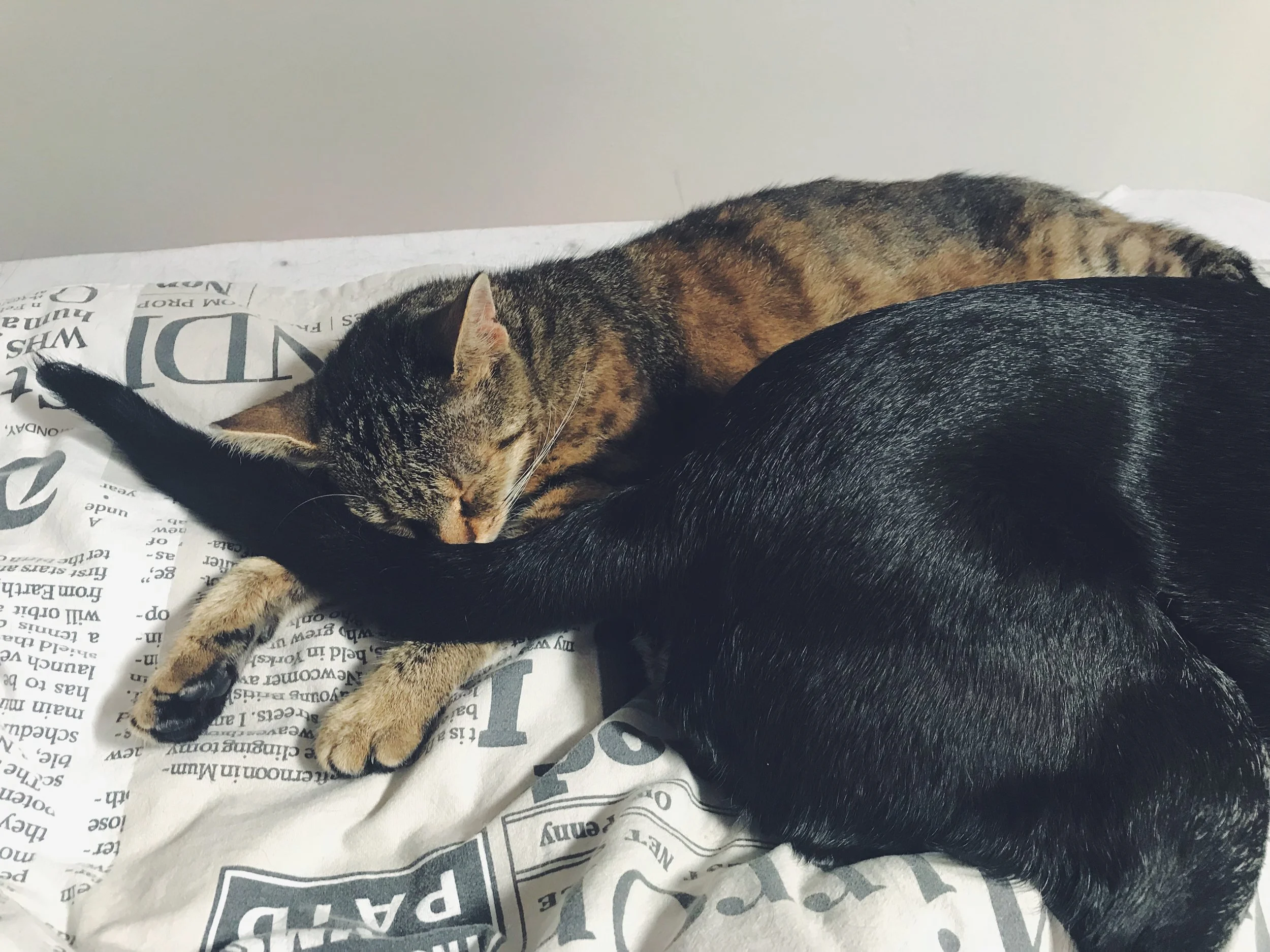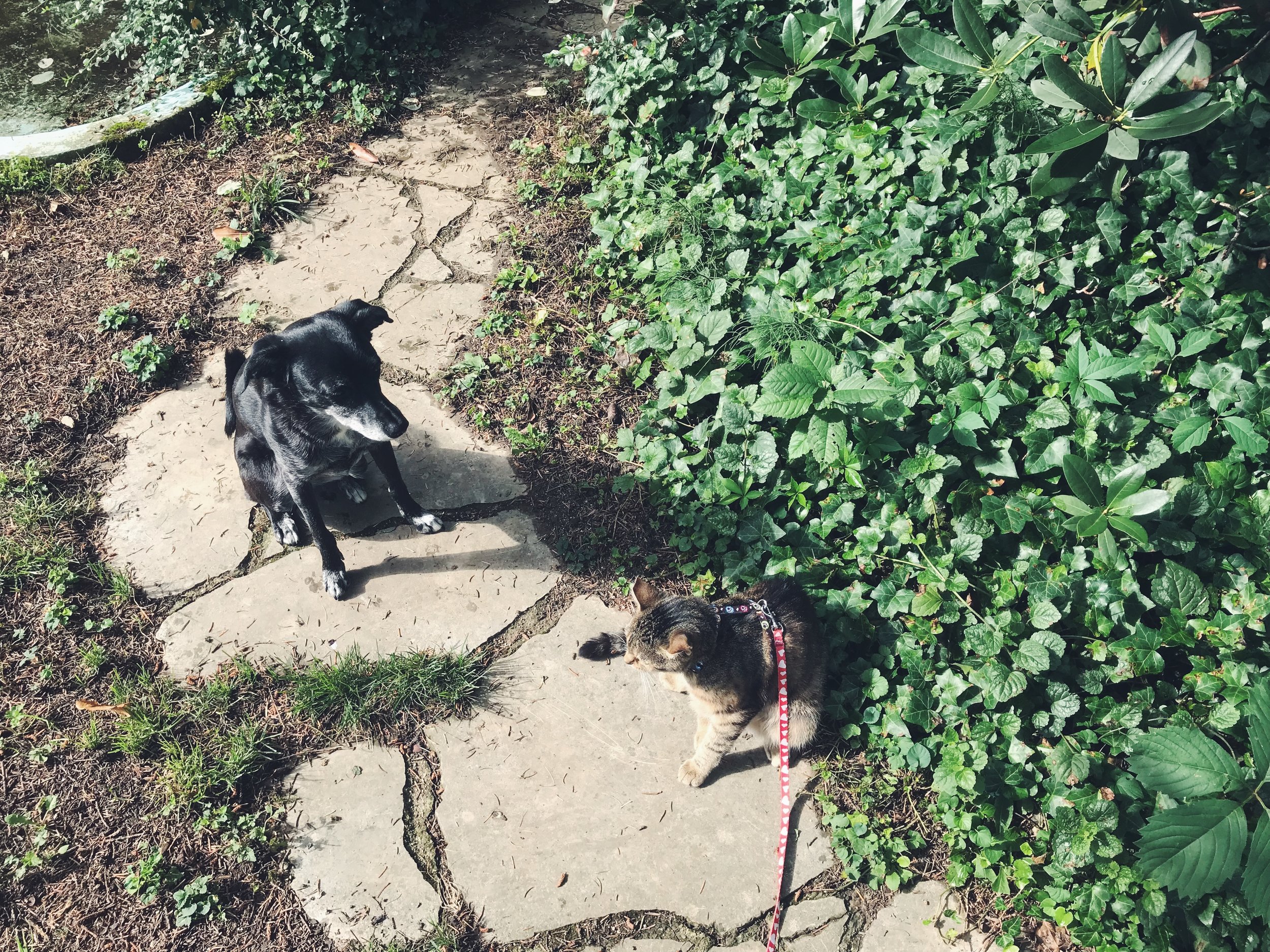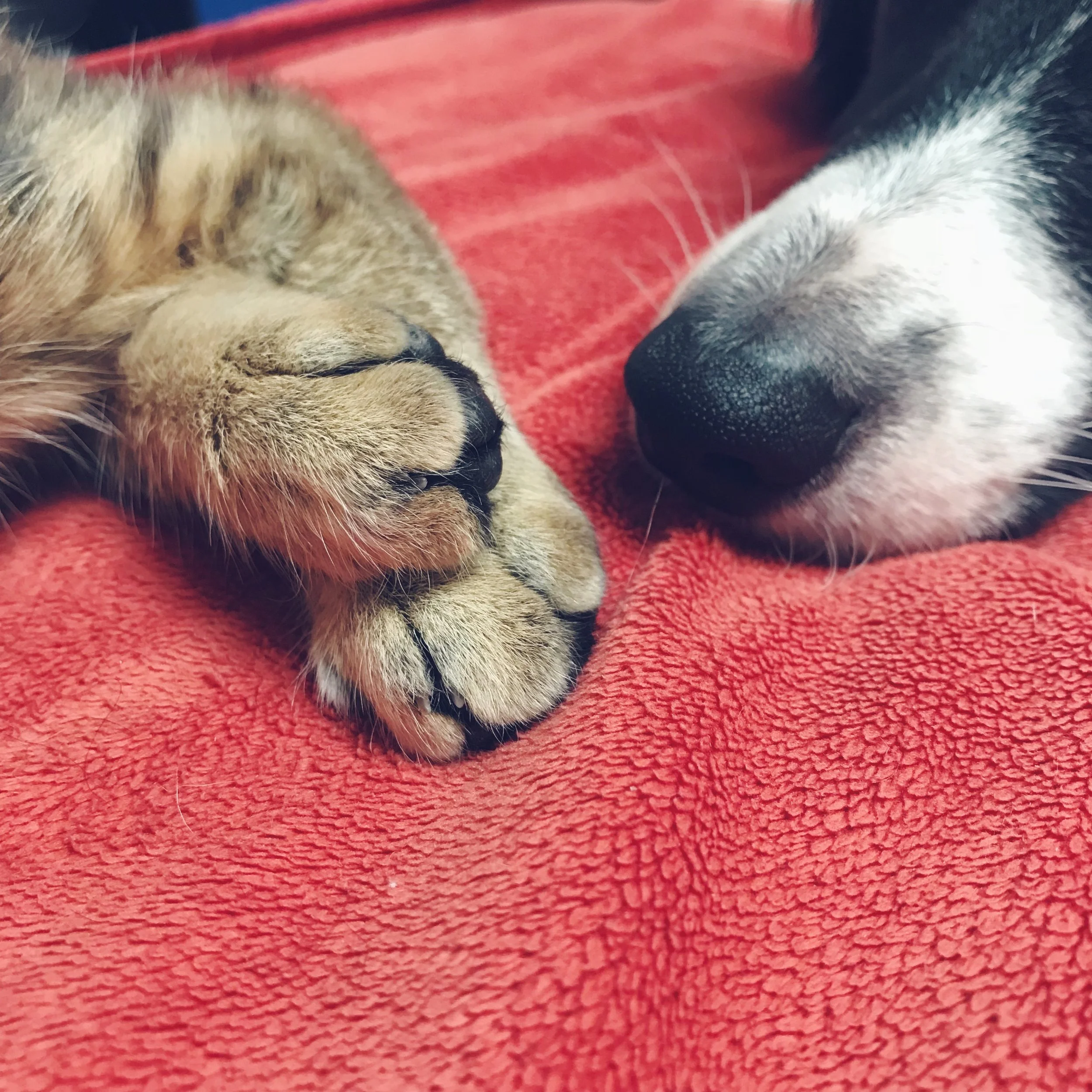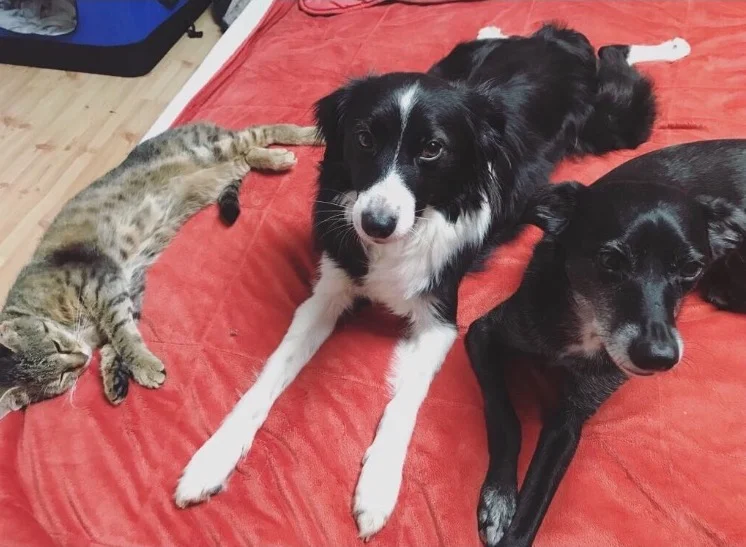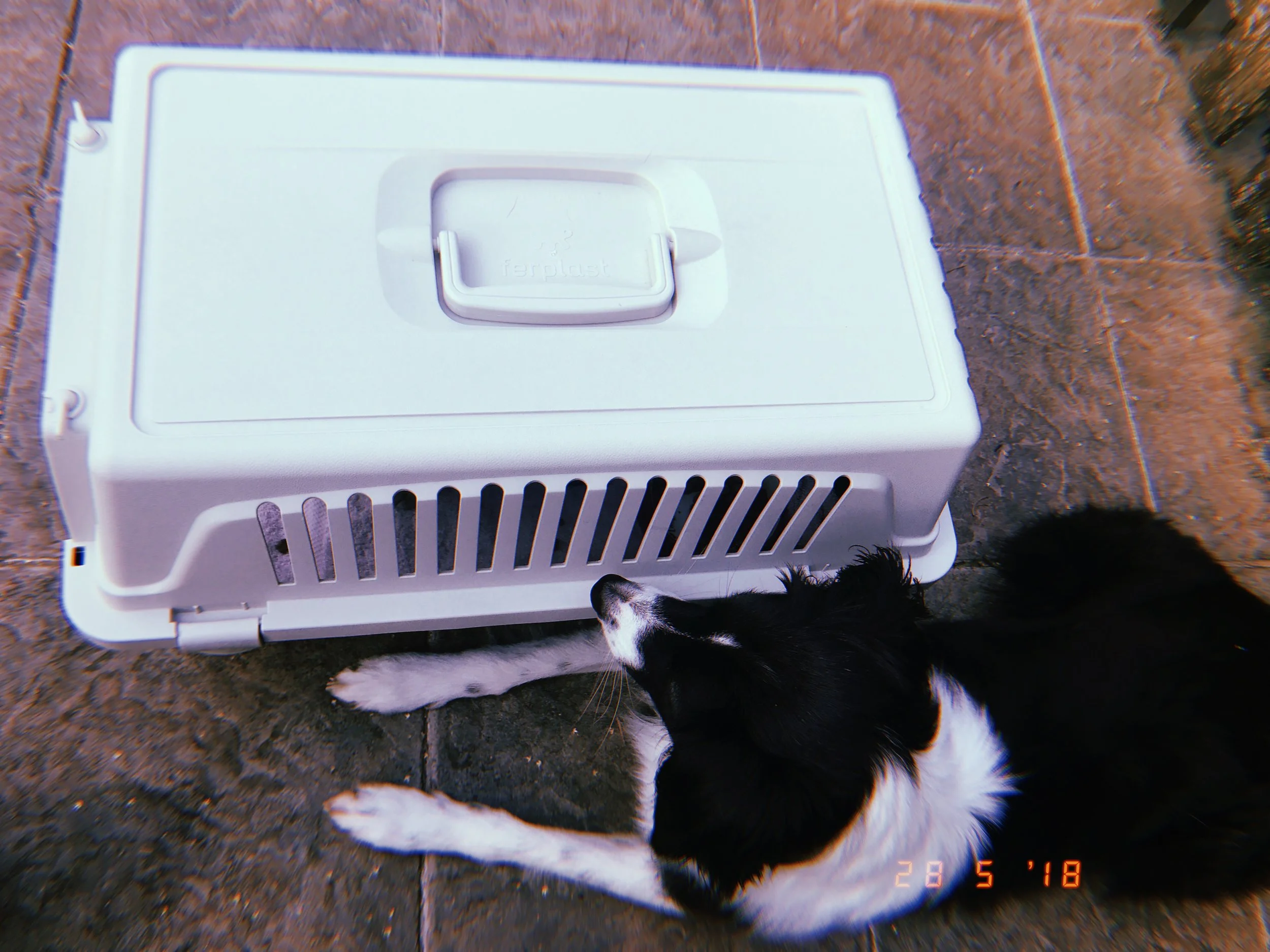When Your Family Doesn't Understand Your Reactive Dog
/One of the hardest things about having a reactive dog is not, actually, the reactive dog. It’s other people around us. Our closest people don’t always understand why we have this dog, why is the dog always barking, why can’t the dog play with the kids, why won’t we let them off the leash, why can’t we just tell them to stop lunging, etc. Our reactive dog is a very complex being and it’s a very special kind of ache when our closest people can’t see this complexity. In their view, the solutions are simple. In our view, they are difficult - we have already tried all the simple ones, haven't we? In today’s blog post I’m going to share my personal journey of how I found peace within my closest relationships despite having a reactive dog that nobody understood.
My story begins back in 2012 when I first adopted Bailey. She turned out to be the most paranoid puppy I have ever seen. I expressed my concerns to the people around me and the consensus was clear: “Don’t worry, she’ll grow out of it.” I wanted to believe that with my whole heart, even though it was more than obvious that Bailey was NOT a normal puppy. She hated people, children, other dogs, ALL sounds, the rain, cars, bikes, and everything else that either moves or produces noise. She hardly ever slept because she couldn’t relax enough to rest. I never expected to be so exhausted just from caring for a puppy; I wonder to this day how we ever moved through those first months. I think I was so high on love and joy that she has brought into my life that everything else just paled in comparison.
I have known her as my soulmate from the second I held her in my arms, and when you love someone so intensely, the hard things don’t really seem so hard.
It took me an entire year to admit to myself that Bailey has problems - and it took me two to three more years to fully explain the extent of these problems to my family and friends. My mom thought I should just let Bailey bark at everything. “Who cares,” she said, “dogs bark!” My friends thought Bailey just needs to get used to everything she’s scared of, so I have to keep exposing her, no matter how big of a meltdown she has. My younger sisters said I was hogging my dog because I didn’t let them go for walks with Bailey without adult supervision (they were 11, I was 19). I wanted to have a joyful puppy experience, I wanted everyone in my life to be involved … but I didn’t expect Bailey to be so challenging. I felt like everybody thought I was crazy, I felt like an incompetent dog owner, totally fussing over nothing, overreacting, and spoiling fun for everyone.
Still, I knew. I knew Bailey was afraid to death. No external pressure could override this instinct.
I knew exposing her to dogs wasn’t working. I knew letting strangers touch her was doing her damage. I knew I couldn’t trust her to an 11 year old who has never handled a hysterical dog before. My first line of defense was to focus on finding training support and information on what is actually going on with Bailey. My family’s opinions had to take a backseat because I needed to focus on Bailey’s rehabilitation. Once I found credible dog trainers, got solid advice, attended seminars, and read some books, I felt much more optimistic about our future. Of course, this didn’t all happen overnight and there was a lot of trial and error with every small change I implemented. But there was one very unexpected thing that I didn’t count on - the people in my life still didn’t understand Bailey and they still didn’t support our training process.
I was extremely hurt and completely exasperated. A friend who never had dogs told me my dog trainer’s advice was no good. My family insisted that Bailey is just poorly trained and not actually afraid. Everybody kept telling me I’m over-complicating things. Most of all, I remember my training boundaries being crossed and ignored over and over and over again. Bailey’s personal space constantly got invaded when she was eating, chewing a treat, or resting. Guests came over unannounced, sometimes with their own dogs. She kept being touched and handled, and she kept having meltdowns because of it all, eventually resulting in comments that my dog is simply “neurotic.”
Again, looking back, I wonder where I found the strength to live through those years. It was extremely hard. I was battling Bailey’s condition all alone and I was so lost. Nobody, except two trainers I was in contact with, understood what I was going through or encouraged me to keep going. Bailey’s shortcomings were projected onto me and her successes weren’t celebrated because it was “normal” for her to “finally” not react to something. It was a deeply challenging time that really stretched me as a person, as a soul. I had many lessons to learn - and learn them I did. Here are the greatest two lessons that I learned during those years:
1.) People who disrespect your boundaries in one area of your life are likely disrespecting them in other areas of your life as well.
This was a very hard realization for me, because in some cases I realized it wasn’t about Bailey at all. It was simply a dynamic that has always been in place and I never stood up for myself because I’m not as protective of me as I am of Bailey. Once her well-being became an issue, I knew how to put my foot down. Eventually, she gave me the strength and the wisdom to do the same thing for myself too. I started standing up for myself, being firmer with my boundaries, and I began noticing who responds with hostility and who with compassion. I began valuing my life and my opinions so much more. I was only 19 when I adopted Bailey, and by the time I was 21 I was truly a different person. The hard realization was this: some people have to go. The situation with Bailey has given me the insight that some people in my life just weren’t good for me. I needed more kindness, compassion, and understanding in all areas of my life. I needed more alignment, more like-minded souls who had the same values as I did. Maybe that’s a natural part of growing up, but I truly couldn’t see how some things were affecting me until Bailey’s well-being was in the line of fire. I had a big realization:
I can’t show Bailey that the world is safe if I keep allowing people and situations in my life that make me physically and emotionally unsafe. Dogs feel our emotions very strongly, and once I found more peace in my personal life, Bailey became a more peaceful dog, too.
2.) There are people who genuinely love you, desire to understand you, and want to help you - but the way they express their love and concern is triggering to you.
I know this sounds like a paradox. How can someone's love and concern be triggering? Well, have you ever been at an extended family event where everybody pestered you with well-meaning questions about your job, children, and marital status? That’s how. Our family (mostly) means well. They are looking at us struggling with this very loud and impulsive dog, and they want to help us by offering advice. The manner in which they express this advice may seem preachy to us, or they decide to bless us with their wisdom at the exact moment when our dog is snapping at an unleashed dog. Maybe they’re even suggesting we give the dog away, which is really just making us angry. Whatever your situation is, I hear you. I’ve been through them all, and I know how infuriating it can feel. Family is a sensitive environment on the best of days, let alone when something big and challenging has hit us. My family loves Bailey; they absolutely adore her. But it took me YEARS to fully see this adoration, because I was only focusing on their unsolicited advice. It also took me years to learn how to properly communicate our boundaries and needs.
I stopped explaining things and started enforcing them. I made it clear to my family that it’s okay if they don’t understand why I have certain rules around Bailey, but they have to respect the rules if they want to be around her.
Should they cross her boundary again, I’ll remove Bailey from the situation and they won’t be able to interact with her anymore. Initially, this declaration was met with shock and a collective eye-roll. I understood their frustration, but it was time for Bailey to get better and I had to be consistent. Within months of respecting my boundaries (however grumpily sometimes), they were able to start seeing big changes in Bailey. Through me, they also came in contact with a dog trainer and other people with complicated dogs, or dogs with difficult backgrounds. Their canine horizons started expanding, and all of a sudden I was being asked for advice regarding their own dogs, or their friends’ dogs. People often have to experience things for themselves before they can believe in them, and once Bailey became the best trained dog in the family (despite her reactivity), the tables turned for us at last. But it took time, patience, and consistency. I made Bailey my priority, I chose her over the opinions of others because I knew she needed my help more than I needed the approval of others.
I also learned how to communicate with my family as if I truly believed they had the best intentions - because 99% of the time, they genuinely did.
This journey took many tough conversations, a forgiving attitude, strong will, and constant education. One of the things that helped my family THE MOST was hearing information from a source that wasn’t me. For some reason, when they heard the exact same thing from a dog trainer, it clicked much faster. We all have walls and projections when it comes to our closest ones. We also have communication styles that tend to set each other off JUST BECAUSE we live together!!!! When people email me, one of the main problems they report is disagreements with family over their reactive dog.
This is why I wrote A Guide for Family and Friends: Reactive Dogs 101. I wanted your family & friends to have an independent resource of information that comes without emotional attachments or projections. ALL questions in the Guide are answered with respect, compassion, and understanding. I want to meet your people where they are, and lead them towards a deeper understanding of not just your dog, but what you are going through as well.
I hope this blog post was able to shed some light on this challenging topic.
I would love to hear your experiences with this; how has your reactive dog changed the dynamic with your family and friends? What has been the most challenging part of this journey? What has been the greatest lesson? Please share with me in the comments!❤️



